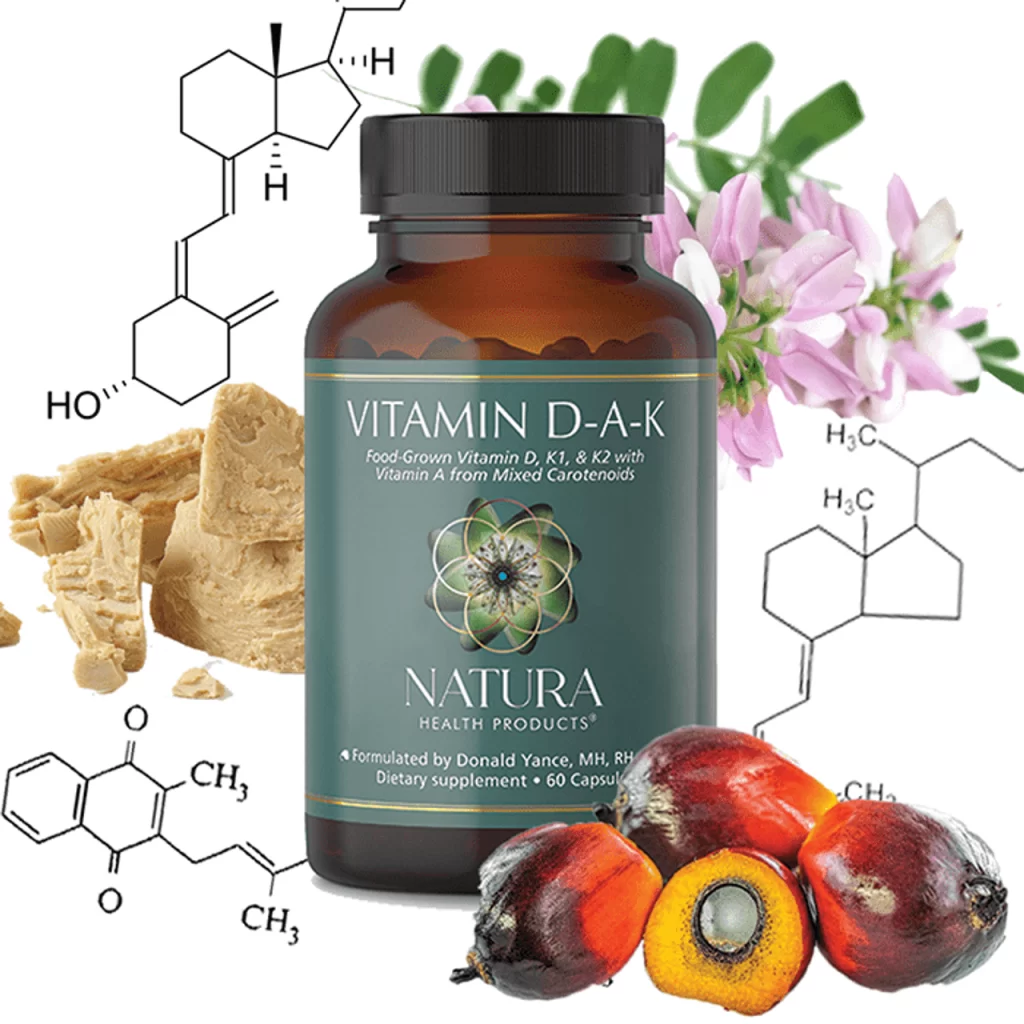Why I Recommend Vitamin D
When I recommend supplements to my patients, I like to explain why they should take something. It’s not enough to just say ‘you should take this because it’s good for you.
Such is the case with Vitamin D. This essential nutrient plays a pivotal role in various bodily functions, making it crucial for overall health and well-being.
Here are the key questions I’ll answer in this article:
- How much do vitamin D do you need?
- Do you need Vitamin K with your Vitamin D?
- What role does Vitamin D play in the body?
- What are the Food sources of vitamin D
- Vitamin D in cancer prevention
Please read on to see if Vitamin D is right for you…
How much Vitamin D do you Need?
The Recommended Dietary Allowance (RDA) for Vitamin D varies depending on factors such as age, sex, and life stage. As of January 2022, here are the general RDA guidelines established by the Institute of Medicine (IOM) for most individuals:
- Infants (0-12 months): 400 IU (10 mcg) per day.
- Children (1-18 years): 600 IU (15 mcg) per day.
- Adults (19-70 years): 600 IU (15 mcg) per day.
- Adults (71 years and older): 800 IU (20 mcg) per day.
- Pregnant and lactating individuals: 600 IU (15 mcg) per day.
Ideal Levels of Vitamin D in the Blood
I like to see vitamin D levels around 50-80 ng/mL for optimal health, though labs often make the cutoff for sufficient levels around 30 ng/mL.

Benefits of taking Vitamin K with Vitamin D
Vitamin K plays a crucial role in directing calcium into the bones and teeth, preventing its accumulation in soft tissues like arteries and kidneys. Thus, taking Vitamin K alongside Vitamin D is not only preferred but essential to ensure proper calcium metabolism and reduce the risk of arterial calcification.
What Role does Vitamin D play in the Body?
Bone Health: Vitamin D regulates calcium and phosphorus absorption, essential minerals for bone health. It helps maintain proper bone density, reducing the risk of fractures and osteoporosis.
Immune Function: Vitamin D supports the immune system, playing a role in combating infections and reducing inflammation.
Mood Regulation: Adequate levels of Vitamin D are associated with improved mood and may help alleviate symptoms of depression.
Muscle Strength: Vitamin D contributes to muscle function and strength, crucial for mobility and preventing falls, especially in older adults.
Food Sources of Vitamin D:
The amount of Vitamin D in foods can vary based on factors such as the type of fish, farming methods (in the case of eggs), and the fortification level of processed foods. Here’s a general approximation of the Vitamin D content in these foods:
Fatty Fish like Salmon, Mackerel, and Tuna:
- Salmon (3.5 ounces/100 grams): Approximately 400-600 IU (varies depending on species and preparation).
- Mackerel (3.5 ounces/100 grams): Around 200-300 IU.
- Tuna (3.5 ounces/100 grams): Roughly 200 IU (varies based on species and preparation).
Egg Yolks:
- One large egg yolk typically contains about 40 IU of Vitamin D.
Fortified Foods such as Milk, Orange Juice, and Breakfast Cereals:
- Fortified milk contains around 100 IU per 8-ounce (240 ml) serving.
- Fortified orange juice can provide around 100 IU per 8-ounce (240 ml) serving as well.
- Fortified breakfast cereals may contain varying amounts, but it’s common for a serving (usually around 1 cup) to provide between 40-100 IU.
SIDE NOTE: Relationship between Vitamin D and Calcium
Vitamin D enhances calcium absorption in the intestines, ensuring the body maintains optimal calcium levels for bone health and other physiological functions. Together, they form a crucial partnership in maintaining skeletal integrity, muscle function, and overall well-being.
Vitamin D and Cancer Prevention
Several studies in the last decade have explored the relationship between Vitamin D and cancer prevention, particularly in breast cancer:
– A study published in the “Journal of Clinical Oncology” in 2019 found that higher circulating Vitamin D levels were associated with a lower risk of breast cancer in postmenopausal women.
– Research published in “Cancer Epidemiology, Biomarkers & Prevention” in 2016 suggested that Vitamin D may reduce the risk of breast cancer recurrence and improve survival rates in breast cancer patients.
– Another study in 2015, published in “Anticancer Research,” indicated that Vitamin D supplementation may inhibit the growth of breast cancer cells and enhance the effectiveness of chemotherapy.
Vitamin D from Sunlight
The amount of Vitamin D synthesized by the skin through sunlight exposure can vary widely depending on several factors, including:
1. Time of day: The skin produces more Vitamin D when exposed to sunlight during midday.
2. Season: Sunlight is more intense during the summer months, leading to greater Vitamin D synthesis.
3. Latitude: Those living closer to the equator receive more direct sunlight, resulting in increased Vitamin D production.
4. Skin pigmentation: Darker skin tones have higher melanin levels, which can reduce the skin’s ability to produce Vitamin D.
5. Amount of exposed skin: More skin exposure increases Vitamin D synthesis.
6. Sunscreen use: Sunscreen with a high sun protection factor (SPF) can inhibit Vitamin D synthesis.
As a rough estimate, studies suggest that about 10-30 minutes of sun exposure to the arms, legs, back, or face a few times per week during the midday sun may be sufficient for many people to meet their Vitamin D needs.
Conclusion
Because it may be difficult to get sufficient sunlight exposure- especially in the winter months- I usually recommend my patients supplement with vitamin D on a daily basis. I carry several brands of Vitamin D in my office, including the brand featured in this article from Natura Health Products. Please call our office at 650-564-9002 to schedule a free 15-minute consultation.






